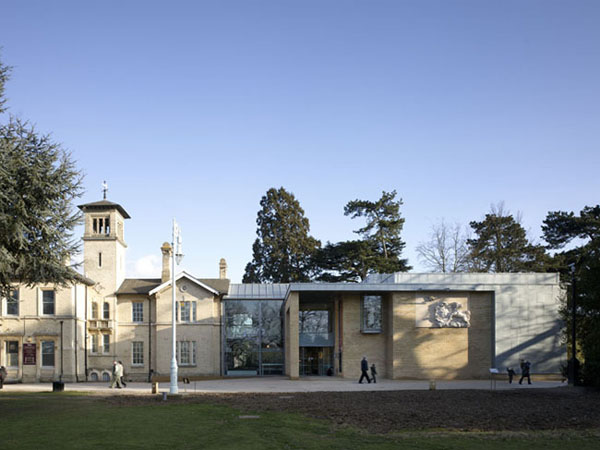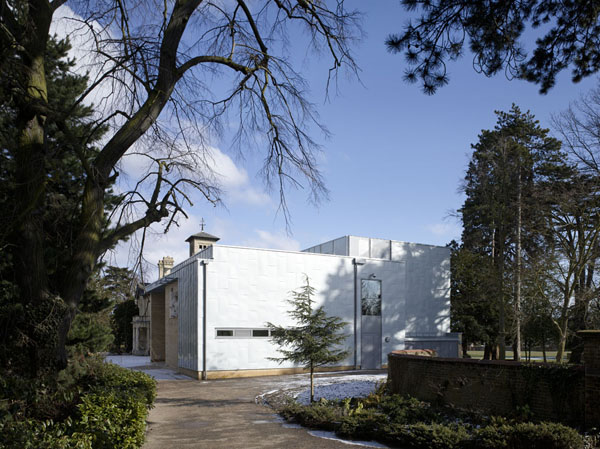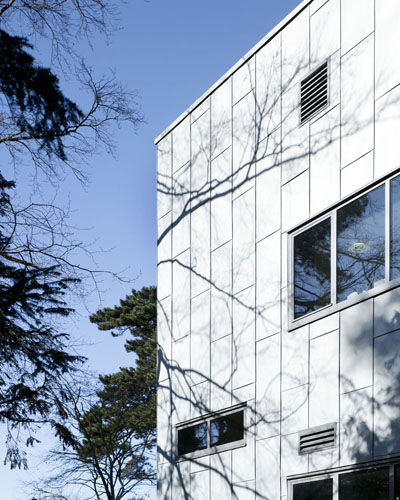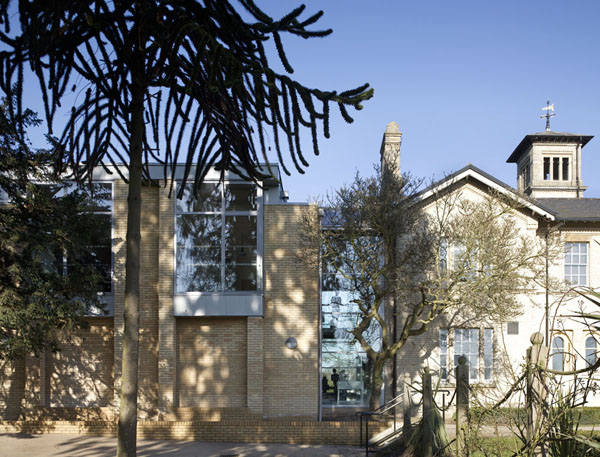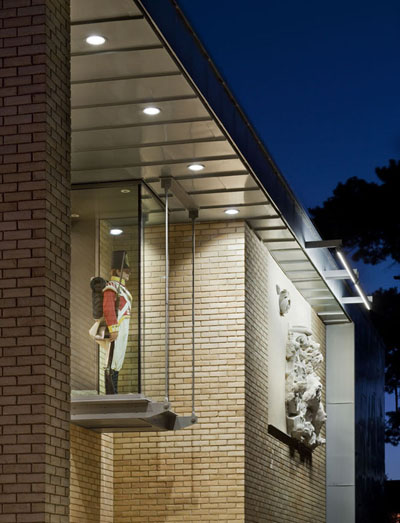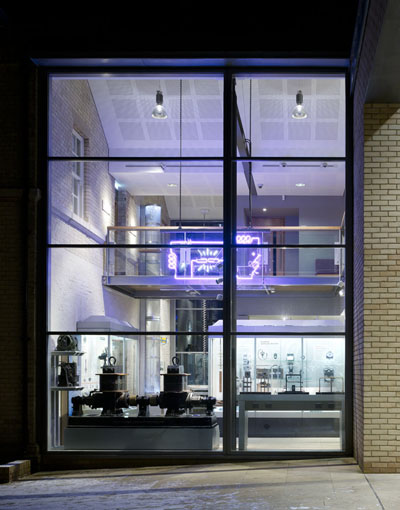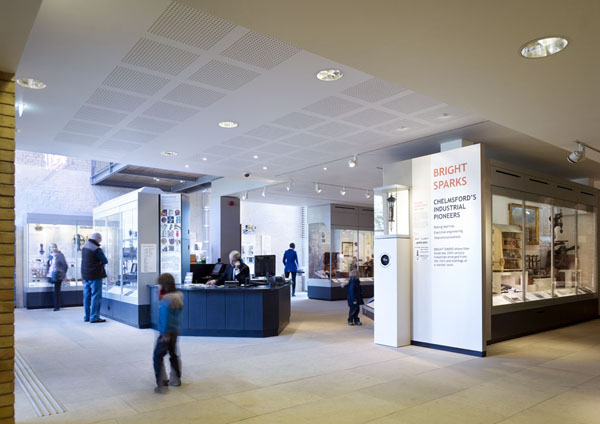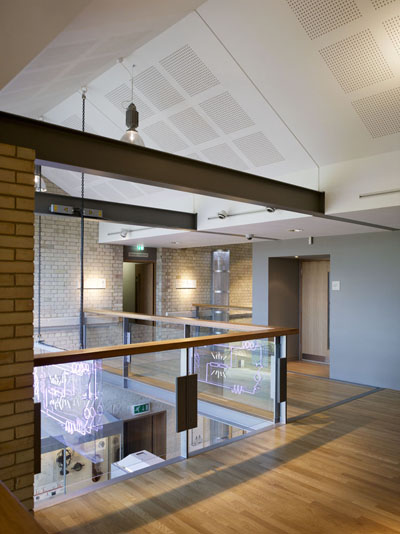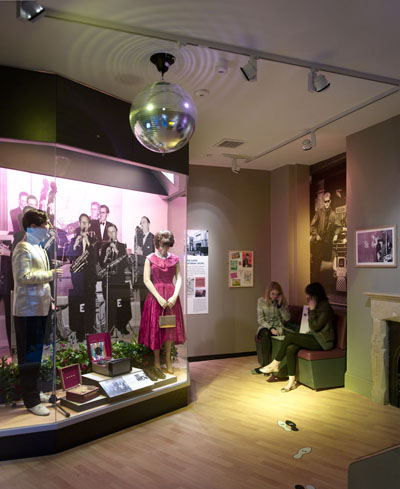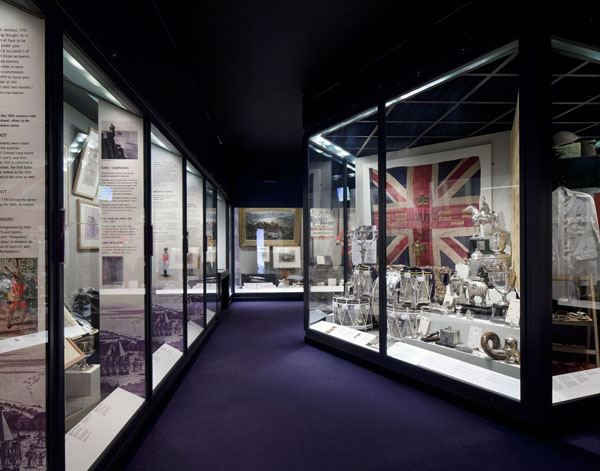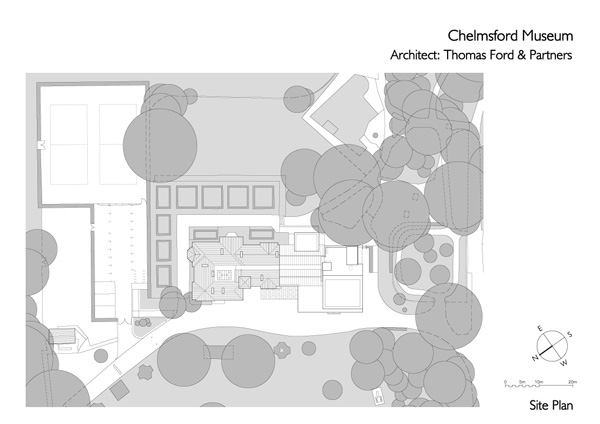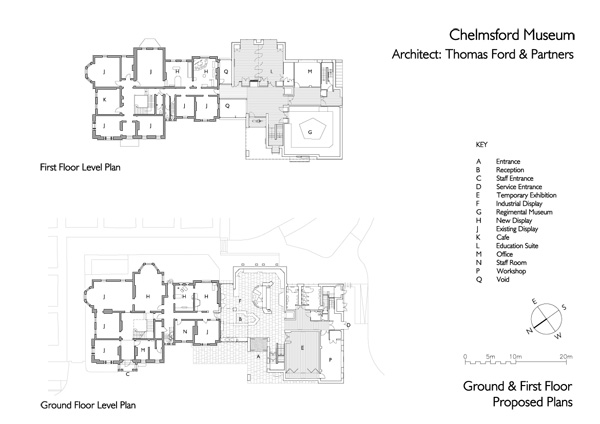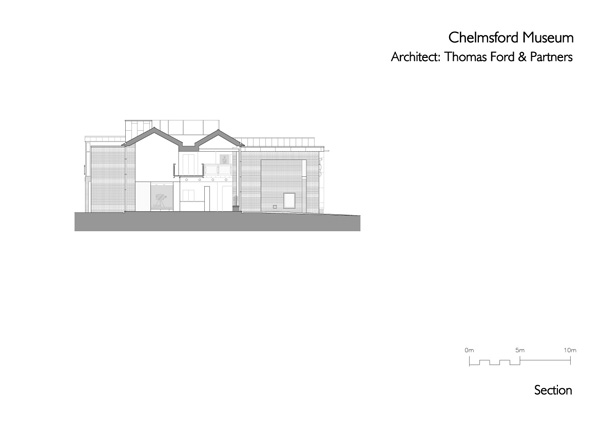Chelmsford Museum
Extension to Chelmsford Museum
Essex Regiment Museum
Client: Chelmsford Borough Council
Contract value: £3.5M
Located in a grade II Listed Victorian villa and its grounds, Chelmsford Museum and Oaklands Park are a popular local amenity. The extension, which was funded by Chelmsford Borough Council for a total cost of £5M, provides a new entrance and climate controlled display areas for the industrial collection, temporary exhibition & Essex Regiment Museum, as well as an education suite, office, workshop and toilets.
The external envelope is built partly in cream brick, complementing the original construction, and elsewhere overlaid with zinc shingles, which reflect the ambient light and colours. Although the extension doubles the area of the museum, the treatment of the massing and envelope are designed to reduce the apparent volume. The double height portico and glazed entrance gallery, bridge link to the villa and York stone paving create a dynamic space between the old and new buildings, the museum and the park. Displays in the park and on the exterior of the museum promote an integrated experience of both.
The building achieves a ‘Good’ BREEAM environmental performance rating, with sustainable design features including enhanced thermal insulation, a ground source heat pump and rainwater harvesting.
Photography: Paul Riddle
